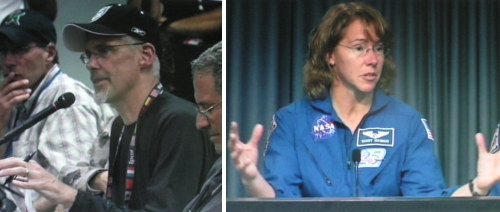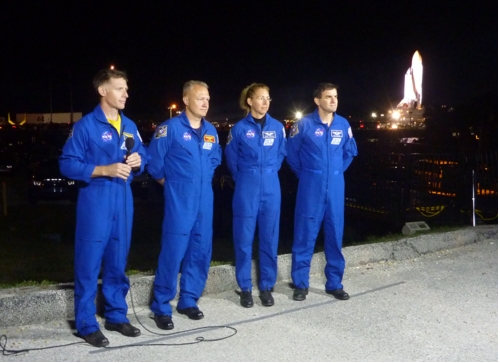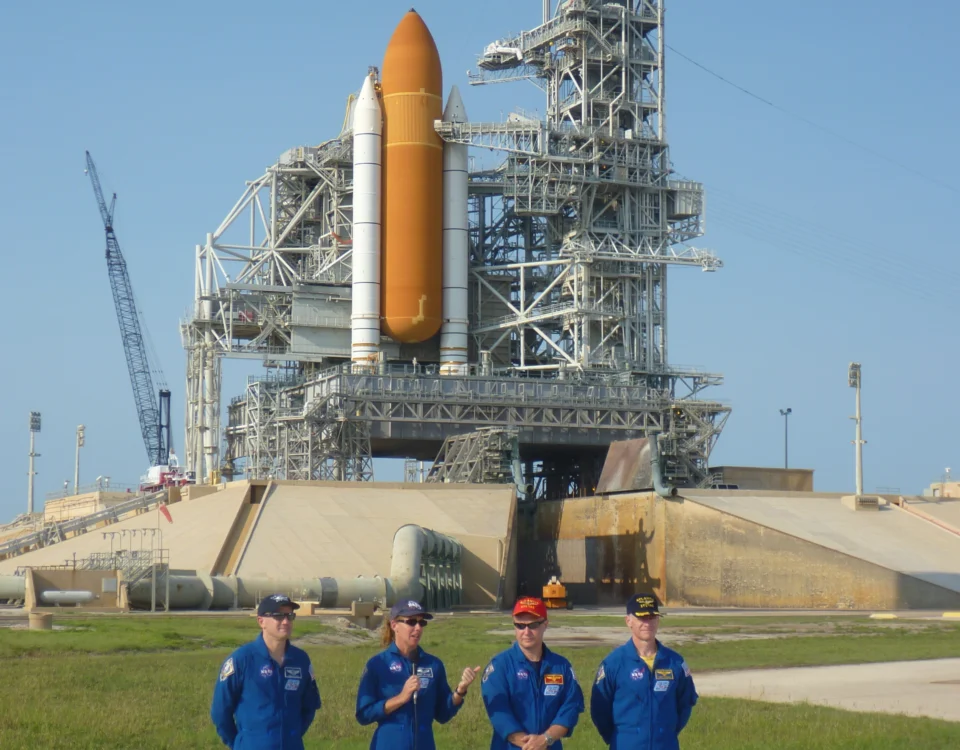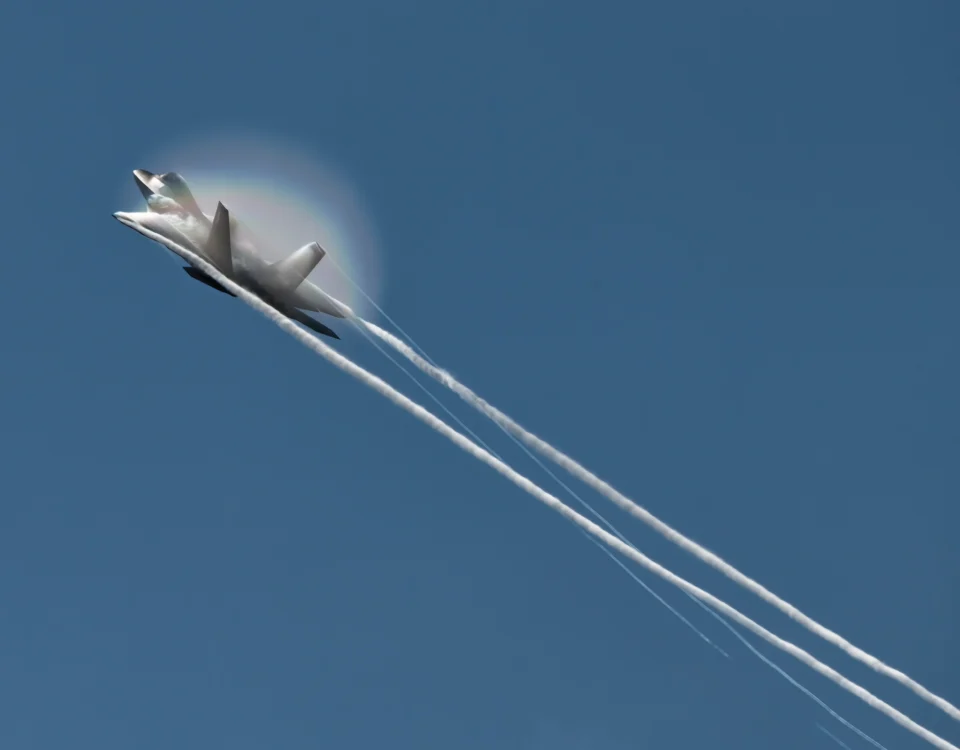What an incredible time to begin a blog about the world of aerospace!
After decades ranked as the preeminent force in manned spaceflight, the United States finds itself sitting in a vacuum, with no alternative to purchasing seats on the relatively low-tech Russian Soyuz rocket-and-spacecraft combination to carry its astronauts to low Earth orbit.
While some minds are boggled by that fact, in truth the Soyuz has a long history servicing the International Space Station. In fact, the first crew to thunder away from Earth for a stint serving aboard the ISS did so aboard a Soyuz in November 2000.
Still, it’s clear that it will be a period of years – “the gap,” as NASA astronauts refer to it – before a rocket bearing a human crew will climb uphill from a launch on United States soil.
Exactly which rocket that crew will be using to attain orbit is yet to be determined. As NASA doles out funding to multiple flight contenders in its Commercial Crew Development stimulus program, it’s far from certain who will emerge as the first commercial venture to send humans to orbit.
While that’s a topic for future editions of this blog – and we’ll be taking a look at one of those contenders in the near future – this is an excellent time to recognize a fundamental shift in manned spaceflight at a personal level.
 |
| Who would you rather venture into space with, a cool, calm, professional John Glenn or a somewhat disheveled Yaphet Kotto, as seen in the film Alien? |
All of us have a mental image of what a NASA crew looks like. From the classic impressions of the Mercury 7 – “can do” attitude oozing from every pore, conservative jackets and ties topped by hair that was barely there – all the way to Space Shuttle Atlantis‘ STS-135 final crew, NASA astronauts render a crisp, finely-honed charisma.
And now think of the fictional crew from the movie Alien: dirty, unshaven, not anyone’s idea of heroic in their mining ventures in space. OK, the crew of the Nostromo was dealing with an extremely hostile stowaway entity, but still – even before John Hurt unwillingly ingested the alien infant – it was obvious that a clean cut professional appearance was not at the top of this crew’s list of day-to-day concerns.
And yet, “the gap” may be offering us the first peek at a coming redefinition of our perceptions of “astronauts.” In the immediate future, some aspects of spaceflight will be taking take the first small steps toward becoming working class.
While NASA talks of the deep space capability of its Space Launch System and the Orion Multi Purpose Crew Vehicle – bound for asteroids, Mars and beyond! – the companies fighting it out for the CCDev program seed money are trying to do nothing more than get astronauts into low Earth orbit and service the ISS.
You’ve probably seen images or video of the interior of the ISS – a maze of air ducting and circuitry that looks anything but glamorous. And that’s where we are – reaching a point where work in low Earth orbit is becoming just that: work.
 |
| A question from your blog host, an answer from Dr. Sandy Magnus, as we talk career paths during the STS-135 post-landing press conference, Kennedy Space Center, July 21, 2011. |
The morning Atlantis landed at Kennedy Space Center to conclude both the STS-135 mission and the space shuttle program, I had an opportunity to ask crew member Dr. Sandy Magnus if she thought we were nearing the point where the job description for “astronaut” might start branching off into two specific directions: explorer versus worker.
“Yes, I think that’s a conceivable idea,” she acknowledged. “Because as you get more access to low Earth orbit, of course the scope of missions possible increases, and so that would require a whole different type of skill set. So it becomes… I hate to say this, but it becomes kind of less of an exploration and more of a utilization, whereas the deep space missions are more of an exploration flavor and that requires different skill sets. So I think, just as when the shuttle came online, you saw an expansion of the types of opportunities available for people – we now needed scientists and medical doctors and a wider variety of skill sets for that – I think you’ll see the same thing here during this transition. So every little leap broadens the possibilities for people to go to space.”
So it seems that the astronauts themselves are aware that making a choice in the career path they follow may soon be a necessity.
How the public will perceive these redefinitions in the years to come obviously remains to be seen. But without public enthusiasm, NASA will, as always, find the funding of its manned exploration programs to be a huge challenge. And with the commercial spaceflight companies in the shaky business of trying to make money in space, it’s likely that we’ll be depending on NASA for the unprofitable exploration side of things for decades to come. In turn, NASA’s fortunes will depend on how well it plays the political game.
 |
| The commander of the STS-135 final flight of Atlantis, Chris Ferguson (left), meets the press at Kennedy Space Center on the evening of May 31, 2011 as the final shuttle is moved to Pad 39A. He’s joined by crewmates Doug Hurley, Sandy Magnus, and Rex Walheim. Keeping the public interested as the United States space program enters “the gap” was definitely on Ferguson’s mind. |
Weeks before the final liftoff of Atlantis, I asked Commander Chris Ferguson about all these challenges.
“We find out that sometimes when the space program ends up on the front page now it’s because we’ve had a problem,” he admitted. “And we certainly don’t want to be famous for problems, so how do you keep it in the forefront and keep young men and women interested in space? And that’s a challenge, because largely NASA is a victim of its own success.
“When we continue to do the same thing over and over again and make it look easy, suddenly it doesn’t become… it’s no longer front page news,” he continued. “I think the way to do that now is to just keep pushing forward and do those things that intrigue people. Maybe they’ll say, ‘My goodness, NASA is now going beyond low Earth orbit, they’re going to an asteroid, they’re going back to the moon.” I think it’s important to constantly keep it moving forward and keep it fresh… I think it’s important for NASA to keep its mission clear and focused and fresh. And I think we’re going to see that as we go beyond low Earth orbit again, hopefully within the next seven or eight years.”
So what do you think? Is the career of “astronaut” at a crossroads? Will space work ever become a “blue collar” profession? And how long will it take for work in space to become common – and will that hurt interest in exploration? Your comments, please…








